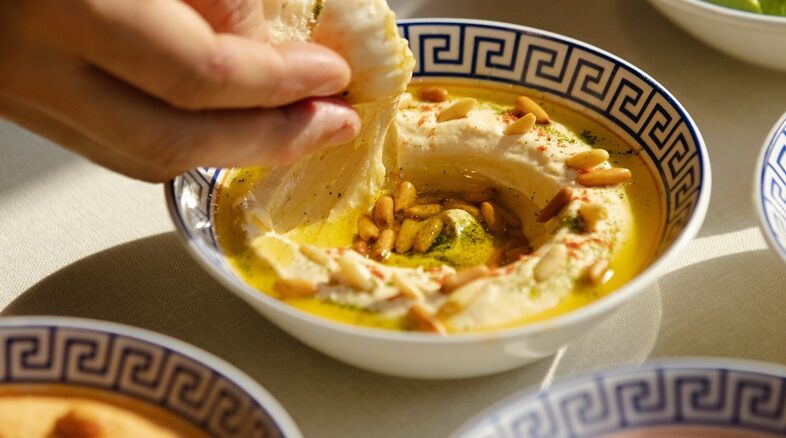
Restaurant psychology tricks exposed: how establishments steer you toward expensive items
Eating out should be about enjoying good food and company, but too many restaurants have turned menu design into a sophisticated psychology game. According to one personal finance expert, a lot of establishments use carefully crafted tricks to guide your eyes toward the most expensive items, often without you realising it.
Fred Harrington, CEO of Proxy Coupons, a discount platform specialising in online deals, has spent years studying consumer behaviour and pricing psychology. His expertise in identifying how businesses influence spending decisions goes far beyond the digital world into everyday experiences like dining out.
“Restaurants have mastered the art of menu psychology,” explains Harrington. “They understand that most people make dining decisions in under 90 seconds, and they’ve designed their menus to capitalise on that quick decision-making process.”
With this knowledge, Harrington breaks down the most common menu manipulation tactics and shares practical advice for spotting them before your next meal out.
The Psychology Behind Menu Manipulation
Restaurants don’t just randomly place items on their menus. Every element, from font size to colour choice, serves a purpose in driving up your final bill. Here are the most effective tricks they use:
- The No-Dollar-Sign Hack
You’ve probably noticed that upscale restaurants list prices as “10” instead of “£10.00”. You might be surprised to discover: this isn’t simply for aesthetics. Research shows that removing dollar signs reduces what psychologists call “payment pain” – the mental discomfort we feel when spending money.
“When you see ‘£10.00’, your brain immediately processes that as money leaving your wallet,” says Harrington. “But when it’s just ‘10’, it feels more like a number than a price. This simple trick can increase spending.”
- The ‘Goldilocks’ Pricing Rule
Most menus strategically place three similar items at different price points. The middle option usually offers the best profit margin for the restaurant, and it’s exactly where most diners gravitate.
“They’ll show you a £28 sirloin, a £42 ribeye, and a £65 wagyu,” Harrington explains. “Suddenly, that £42 option looks reasonable, even though it might be overpriced compared to what you’d pay elsewhere.”
- Decoy Dishes
Some menu items exist purely to make other dishes seem like bargains. That £95 lobster special isn’t meant to be ordered frequently, rather it’s there to make the £55 salmon look affordable.
“Restaurants will include one ridiculously expensive item that makes everything else seem reasonable by comparison,” notes Harrington. “It’s anchoring at its finest.”
- Eye-Path Placement
Menus are designed based on how our eyes naturally move across a page. The most profitable items get placed in the upper right corner – the first place most people look after scanning the centre.
“Your eyes typically hit the centre of the menu first, then move to the upper right,” says Harrington. “That’s premium real estate, and restaurants use it for their highest-margin dishes.”
- The Power of Descriptions
Long, descriptive names make dishes seem more valuable. “Grilled Chicken” becomes “Herb-Crusted Free-Range Chicken Breast with Roasted Seasonal Vegetables and Garlic Aioli.”
“The more words they use, the more you’re usually willing to pay,” Harrington observes. “Each adjective adds perceived value, even if the actual dish is quite simple.”
- Strategic Typography
High-profit items get visual emphasis through bold fonts, boxes, or different colours. These design elements draw attention without being obvious about it.
“If something stands out visually, there’s usually a financial reason behind it,” Harrington points out. “Restaurants highlight what they want you to order, not necessarily what’s best for your wallet.”
Fred Harrington, CEO of Proxy Coupons, commented:
“Understanding these menu tricks is like having a superpower when you dine out. Once you know what to look for, you can’t unsee it. The key is to go in with a budget in mind and stick to it, regardless of how the menu tries to influence you.
“I always recommend taking a few extra seconds to scan the entire menu before making a decision. Don’t let your eyes get trapped by the fancy descriptions or strategic placement. Look for simpler dishes that might be tucked away in less prominent spots – they’re often better value and just as delicious.
“Another effective strategy is to decide on your price range before you even open the menu. If you’re comfortable spending £25 on an entree, ignore everything above that threshold. This prevents the anchoring effect from working against you. Remember, restaurants are businesses first, and they’re very good at what they do. But an informed customer is always their biggest challenge.”

